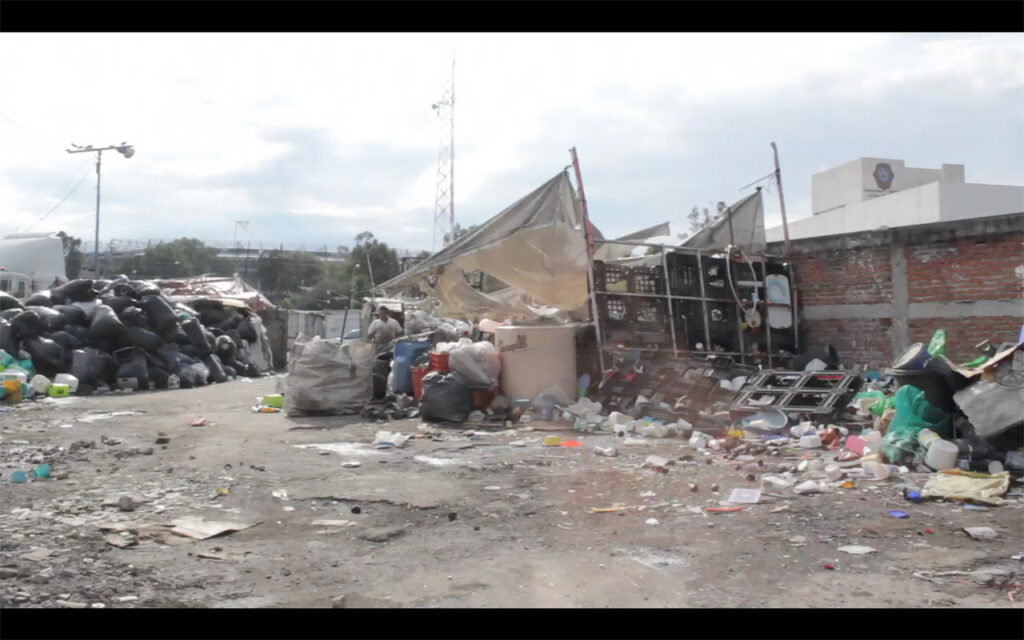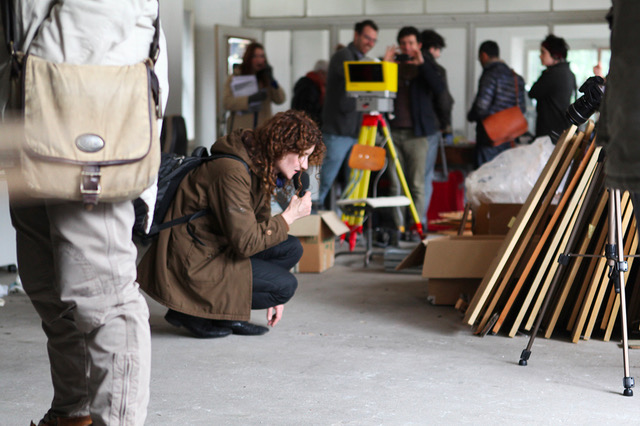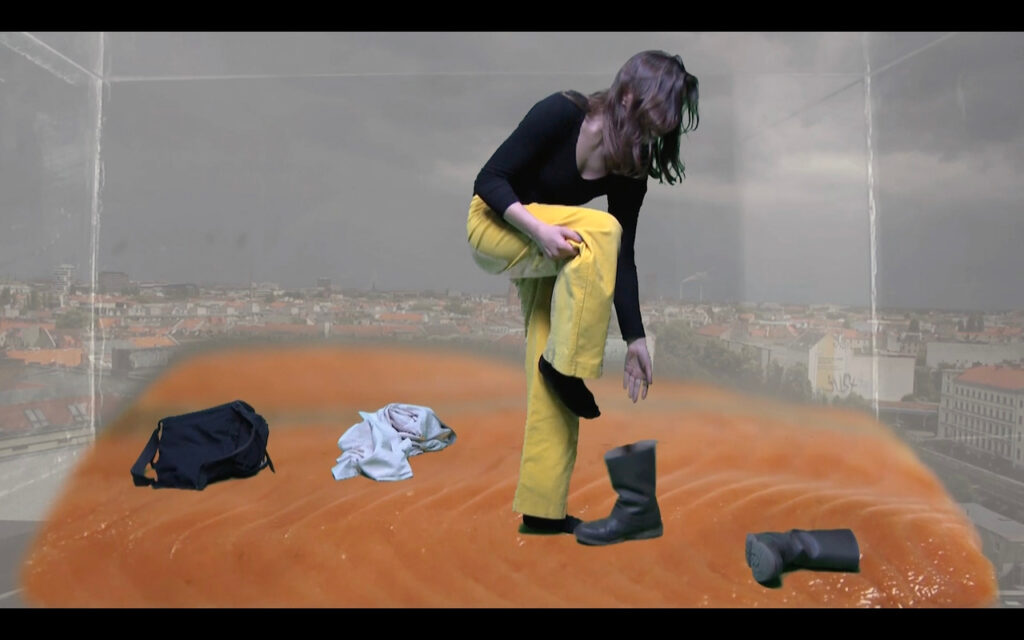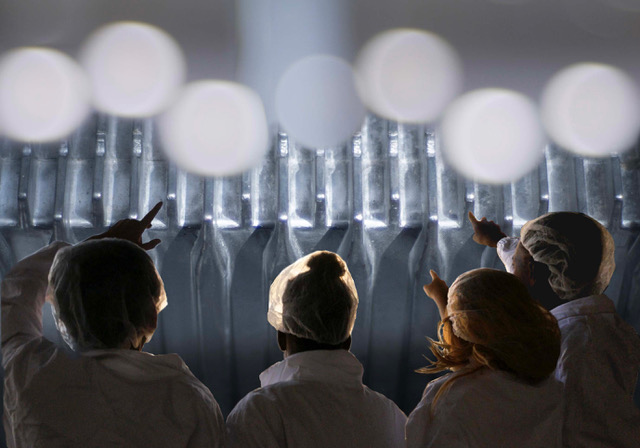Hanna Hildebrand
Hanna Hildebrand is an artist working in film, photography and performance whose work engages with ideas of narrative, imagination and more recently dystopia.
With a documentarian approach her artwork explores the filmic concerned with recording urban histories, using moving image to create and dismantle utopic ideals and to question the characterisation of societal narratives. She uses storytelling to discuss the specificities of individual and collective thought and is currently working on a project for beyondmatter.eu, exploring digital art conservation, digitized heritage and experimental museology.
What drew you to art making as a profession, and how has your practice evolved over time?
I originally had in mind to be a film director and worked with a director in Como who taught me the basics. Then I got to know a friend who was attending the Staedelschule Art Academy in Frankfurt, I started there as a visiting student and eventually became a full-time student. I spent six years there and through that experience avenues opened into the art world. I think that all these experiences of making provided a foundation, one that I can return to and build on again and again. I am currently working on a three-part film Omega Transit, which has been in production for some years, and also have two augmented reality projects in preparation, Straße and Tiranamid. These projects are related by a practice of starting from real places, locations, their history and inhabitants, moving to an imaginative level, a kind of hyperuranion of playful reasoning.
Do you see your work in relation to notions of community particularly when examining dystopic ideals?
Yes, the topic of dystopia is mostly related to community, but I think about community not only in dystopian terms. For example, in my film 135 Why I am thinking about community, but also about how the personal is political. Communities are made up of many individuals and individuals carry the communities. I am often driven by a search for human understanding and by the recognition of common ground in myself and others. Dystopias are narrative constructions to visualize thoughts or concepts, but they can sometimes have negative associations with cliches. In my work I try to deal with the world in a realistic way, not exactly idealistic or political, but through the poetic and I see the power of using narrative constructions. This is the basis of my work Omega Transit: the utopian and the dystopian paradigm are tools for exercises of the imagination in how things could worsen but also how things could improve. Omega Transit begins with dystopia, but the plot moves to utopia. In the works Straße and Tiranamid I am talking about individual destinies within the context of community and collective histories, but I see the individual within the collective.
How do you feel about exhibiting your work? Do you think your works change when put into an exhibition context?
I usually produce works for exhibitions, and exhibitions are for me exercises and steps of trying things out, part of a process. The works are often still in progress even while being exhibited and there is a performative aspect in the gallery or museum setting. The audience participation is something which reveals new aspects to the work. The necessity to adapt to the limit of an exhibition can be bothersome but also becomes part of the artwork. I am curious about what will happen with my upcoming integration of AR and the way the work will be displayed outside of the usual exhibition model.
Your up-and-coming plans for some AR artworks sound interesting, how do you see your artworks relation to technology and the unethical practices of technological production or how technological progress is used to assert power and control?
I am aware of how technologies can be used as a kind of manipulation or threat; we are sort of in the hands of a dark dystopian machine that can potentially make us into controlled homogenous consumers. I still have hope that we are conserving our autonomy, the ability to reflect and imagine even if it sounds a little too simplistic, but I hope it is possible to have a critical outlook whilst still having a sense of humor. Sometimes I don’t feel like there is much we can do about how technology and the power of capitalistic intention can be all consuming. I think it is good to be aware of, but I still try to look at it with humor and keep doing what I can to challenge this topic through my work.
You use film a lot in your work, what is it about film that you find accurately expresses your ideas, or is it more of a medium for your ideas to develop?
You can layer a lot through film, it is a medium where you can grapple with real complexity, and I think this is useful to me because I am often working with subjects where intentions are layered. Maybe I will find a way to work with other mediums but I’m also interested in all of the emotional aspects and I appreciate how they can be portrayed in the filmic medium. It is really about this space which is created by the time you are dedicating to the film and where you enter into this realm which opens up alternative realities. So, I think the use of film is also related to my appreciation for the imagination and possibility of visualizing thoughts and stories and concepts, but of course the medium of film in art can be used in so many different ways, it is somehow really limitless.
Particularly Helianthus Coco seems to have a feminist approach, about consumerism, the female body, spaces of feminism and the subordinate role of the feminine in a dominant fiction of male subjectivity, was that your intention?
How I present female narratives is to some extent from my own perspective an experience as a woman. My works usually start from a universal point of view but of course I am fighting for inclusion and equality. I fight for it naturally and from the point of view of being human, generally I try to not put things in categories and to think of it not necessarily as a feminist artwork, what I wish I could do is break the categories and the privilege, this is my starting point.
Your work 135 Why was a work that you made whilst completing a residency, could you say any more about what you were considering when you made that work?
I have to say that it affected me considerably doing an artist residency in a completely different environment; I was struck by how being immersed in the culture can impact you in relating to that place and making work. I was living in this industrial area, a big metropolis and what was really evident to me was the people I got to know, experiencing life from their perspective and how different everything was. It is also a challenging situation when you can’t understand the language, it all seemed very abstract, but I was able to communicate with certain people, for example I talked to a group of women in Seoul who gave me a sense of a certain struggle which was related to the pressure of the society, of getting a good job and being in a good school, and also political issues that were going on that year. So the artwork ended up being this film of 135 questions about mundane and also important issues. It was also about how it is hard for people to ask these questions or how this question of ‘why’ was coming from them but also from me, so it is really a universal ‘why’.
Spazio A Voce is a performance and sound piece you made at the ex Archivio Harald Szeemann in Switzerland, how did you develop the idea for this artwork, did it evolve from the context and surroundings as an interventional artwork or was it more about disrupting the form of an artwork?
I see it as having both of those aspects. The performance took place in the former studio and home of the late Harald Szeeman, the influential Swiss curator and art historian. The piece was about observation and the medium of voice. As I was walking through the rooms, speaking into a microphone which was connected to an amplifier in my backpack, I was describing what I could see and capturing those details which might seem irrelevant. I realised how precious these details could be, and about the person Harald Szeemann and the transfer of life intentions, emotions and actions onto these objects. So, in a way it was a homage to Szeemann and how histories can be recorded in objects.
If All That Remained of Our Century Was a Garbage Bag is an artwork you made in 2013 about one of the biggest landfill sites in the world and the recycling and trash collection process in Mexico City. In a more formal documentary style, it shows the recycling system from different perspectives. I’d be interested to hear your thoughts on this work as well.
This work is an interesting meeting point for me between reality and the realm of something else. I was driven by an almost journalistic approach, already in the production I knew I would not be able to create a real journalistic response but that was not my intention, it was about experiencing, as it happened, the complexity of narratives which can characterise our society. In this case it was Mexico City which is such a big place with areas of obscurity, so I knew I was not going to get a clear picture of the whole system. The methodology behind the work became prevalent and the process of trying to document the compromise of waste management, as I never actually managed to visit the landfill site, so it remained in this area of myth. But I spoke to lots of real people, garbage collectors, real people with some real stories, and this idea of not arriving somewhere was interesting to me. I have always been interested in this struggle of an artist’s responsibility and the reality of stories which follow a complexity that are hard to document.
By Ruth Miller















